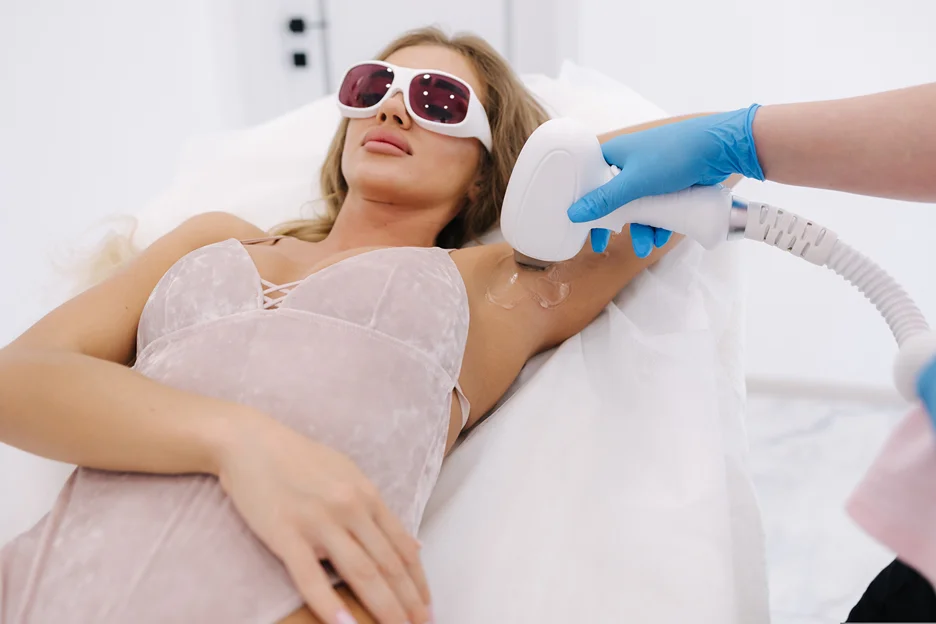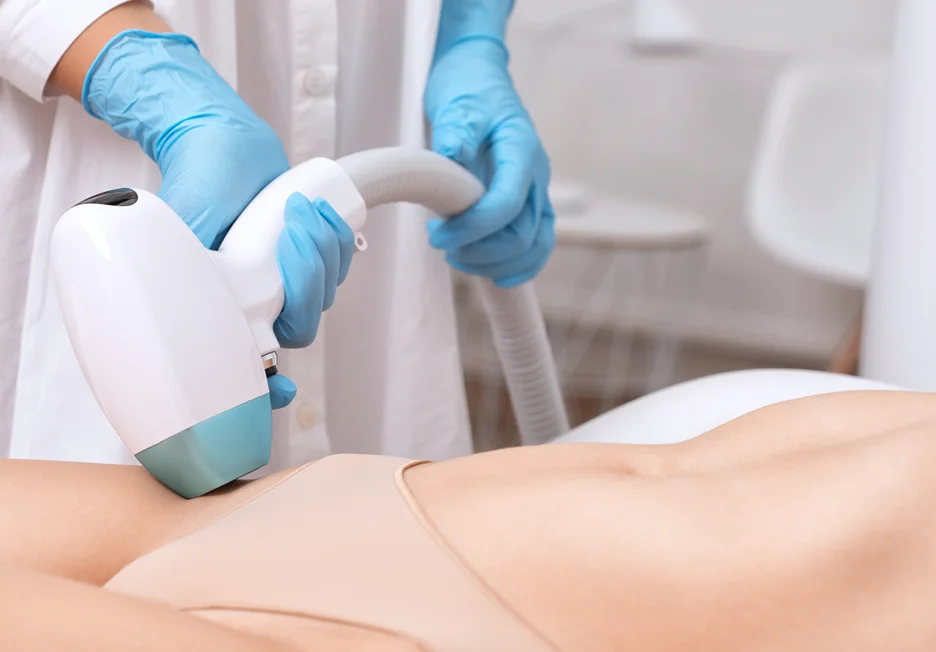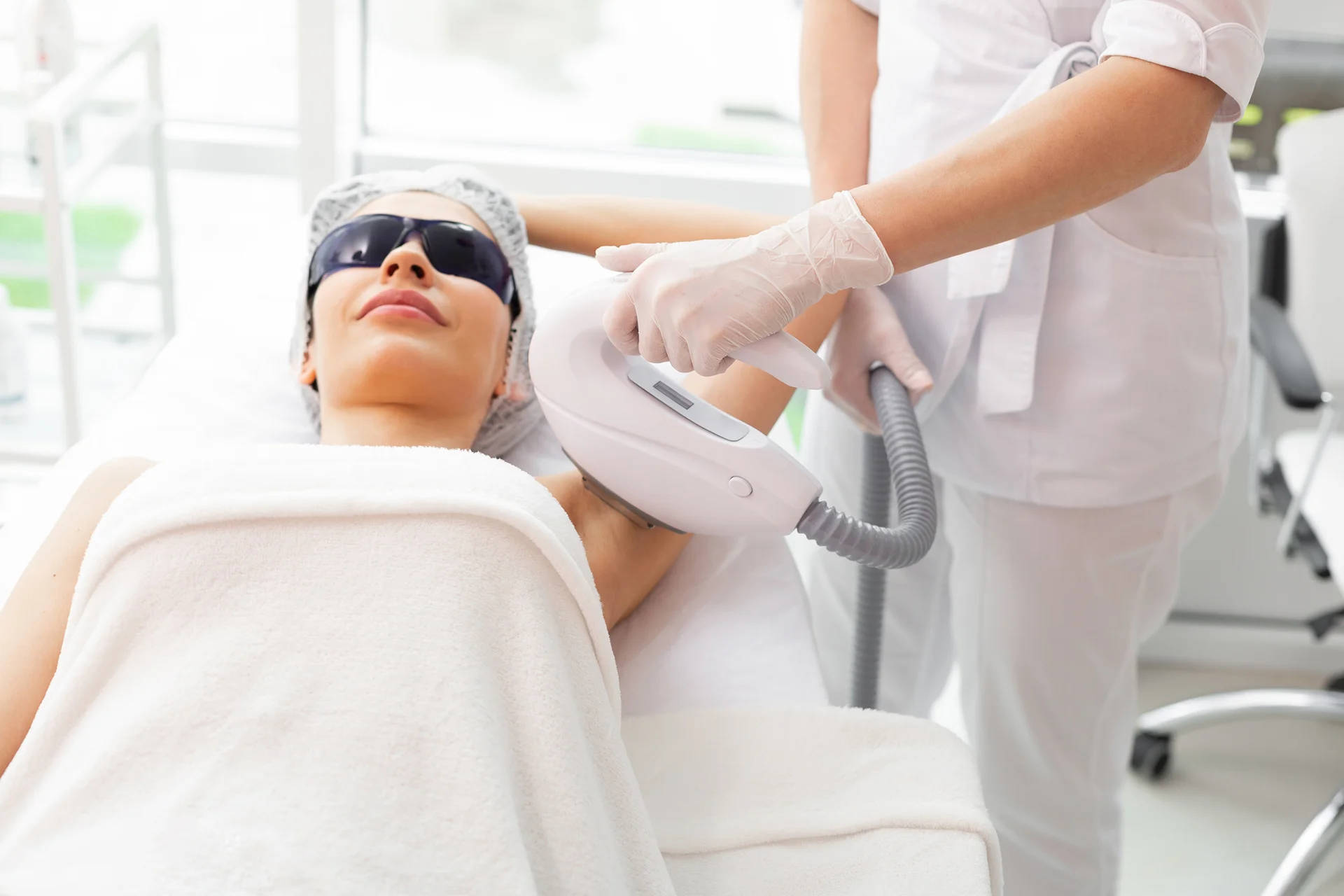Want Laser Hair Removal Without the Downside of Ingrown Hairs? Read This.
Ingrown hairs are a relatively common side effect that laser patients deal with. But why do these irritating inflamed hairs appear, and how can you banish them for good?
This guide we prepared will answer that and explore the causes, prevalence, and – most importantly – effective treatments for ingrown hairs after lasers.
How Common Are Ingrown Hairs After Laser Hair Removal?

Laser hair removal does not typically cause ingrown hairs. In fact, it often helps prevent them by permanently destroying hair follicles.
A study on pubic hair removal found ingrown hairs to be one of the most frequent complications. However, only 2 participants in the said study reported using lasers – the majority used razor blades.
Though lasers reduce hair growth long-term, isn’t there still new regrowth between sessions? During these growth cycles, emerging hairs are vulnerable to improper direction and penetration back into the skin.
Those prone to ingrowns may experience a heightened risk of ingrown hairs about a week post-treatment when hairs are re-sprouting.
While proper exfoliation and skin care can help, they cannot completely prevent ingrowns which are simply an inherent side effect of the laser hair removal process.
What Could Cause Ingrown Hair After Laser Procedures?

Ingrown hairs after laser hair removal may be caused by the disruption of the hair growth cycle, improper hair removal methods between treatments, genetic predisposition, and skin inflammation from harsh products or techniques.
Here’s a table with a deeper explanation of each factor and how they can pave the way to ingrown hair. Note that laser hair removal is rarely the cause of such an issue.
| Factors | Explanation |
| Disrupted Growth Cycles | Laser-induced shedding of treated hairs disrupts the natural growth rhythm. Rapid sprouting of new anagen hairs is more prone to misdirection due to impaired follicle structure. |
| Hair Removal Methods | Shaving or waxing between laser sessions can worsen ingrowns. Cutting hairs at sharp angles distorts regrowth paths, while waxing and plucking risk trapping hairs beneath the skin’s surface. |
| Genetics | Individuals with tightly curled or coarse-textured follicles are at greater risk of persistent ingrown hairs after laser treatments. The hair is more likely to curve into the surrounding skin. |
| Skin Inflammation | Improper laser settings, frequent treatments, or harsh skincare can cause irritation and swelling, leading to inflammation that blocks proper hair emergence. This converts hairs into ingrown ones. |
Don’t let unwanted hair derail your confidence. Learn more about our customized hair removal solutions! Contact us today!
How to Deal with Ingrown Hair Bumps After Laser Hair Removal?
Ingrown hair bumps after laser hair removal can be dealt with by exfoliating daily, using warm compresses, applying over-the-counter treatments, avoiding friction from clothes, seeing a dermatologist if needed, and being patient as healing takes time.
Proper shaving techniques and laser hair removal help prevent ingrown hairs.
- Exfoliate Daily: Gently scrubbing with a soft brush or washcloth lifts ingrown hairs and clears debris without irritating skin. Focus on exfoliating the treated areas once daily.
- Use Warm Compresses: Applying a warm, wet washcloth over bumps for 5-10 minutes 2-3 times a day can help greatly. The heat gently draws out trapped hairs. Just don’t squeeze bumps as that can cause infection.
- Try Over-the-Counter Treatments: Products like Tend Skin or creams containing salicylic acid reduce inflammation when applied 1-2 times daily. They also help open follicles so hairs can emerge properly. Gently smooth over bumps after cleansing.
- Avoid Friction: Tight clothes rubbing on bumps will only aggravate them further. Opt for loose, breathable fabrics until the area has fully healed.
- Be Patient: Healing takes a few weeks as your skin adjusts post-laser. Monitor for signs of worsening pain or swelling which may indicate infection.
If home remedies fail to resolve bumps after 1-2 weeks, make an appointment to see Dr. Soni. He can provide advanced treatment options:
- Extractions: Ingrown hairs that won’t surface may need to be removed with a sterile needle.
- Prescription Medications: Topical antibiotics or retinoids treat infection while reducing inflammation.
For prevention, techniques like shaving properly along the direction of hair growth can minimize ingrown hairs. Laser hair removal and regular exfoliation also help deter bumps long-term.
With diligent at-home care and Dr. Soni’s customized treatments, you can smooth your skin and finally conquer bothersome ingrown hairs. Don’t hesitate to contact our knowledgeable staff at Ethos Spa for extra guidance on getting rid of post-laser bumps.
Ethos Spa Offers Cutting-edge Laser Hair Removal. Say Goodbye to Ingrown Hair Woes. Schedule Your Session Now!

FAQs About Ingrown Hair During Laser Hair Removal
Why do I have ingrown hair on my legs after epilating?
Epilating hair removal can break hairs instead of pulling them from the roots. Blunt hair tips then get trapped under the skin when growing back, becoming ingrown hairs.
Are there specific Brazilian ingrown hair removal techniques?
Yes, gentle daily exfoliation helps open follicles so hairs can surface normally after a Brazilian hair removal session. Using antibacterial creams reduces inflammation. Seeking professional treatment like microdermabrasion can help difficult cases.







